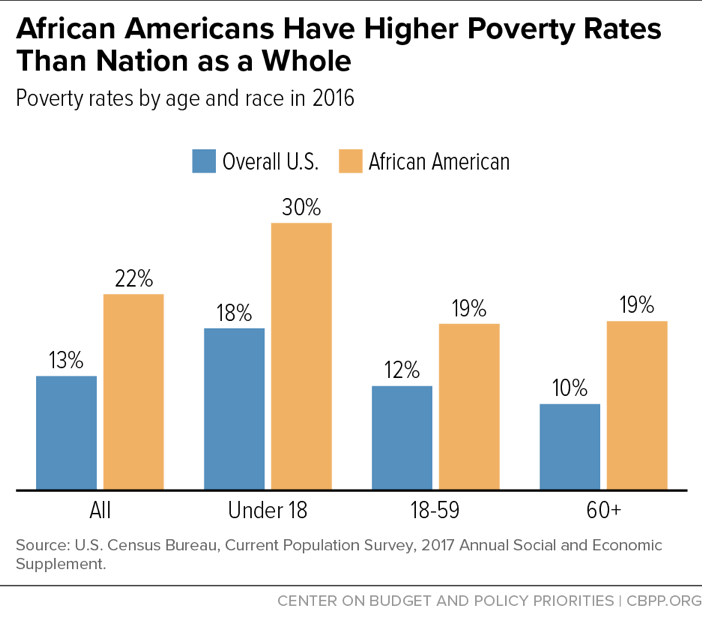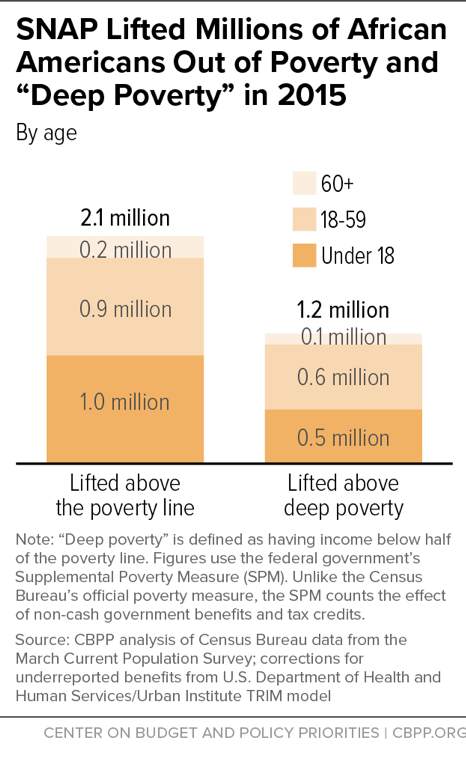SNAP Helps Millions of African Americans
End Notes
[1] Figures for people lifted out of poverty by SNAP and for household food insecurity refer to people identifying themselves as African American alone, non-Hispanic. For all other figures in this fact sheet, African American refers to African American alone or in combination with one or more other races and includes African Americans with Hispanic origin.
[2] U.S. Census Bureau, Current Population Survey, 2017 Annual Social and Economic Supplement.
[3] Alisha Coleman-Jensen et al., “Household Food Security in the United States in 2016, Statistical Supplement,” USDA, September 2017, https://www.ers.usda.gov/webdocs/publications/84973/err-237.pdf.
[4] The source for these data is the U.S. Agriculture Department’s fiscal year 2016 SNAP Households Characteristic data. Reporting of race/ethnicity is voluntary and is missing for 15.5 percent of SNAP participants. Some 11.5 million SNAP participants self-identified or were coded by an eligibility worker as “African American.” They represented about 26 percent of all SNAP participants. The cases with missing race/ethnicity information are concentrated in 23 states. For example, Tennessee, Texas, and Washington each were missing the data for more than two-thirds of SNAP individuals. As a result, we relied on another data source, the March 2017 Current Population Survey, to estimate that another 1 million African Americans, 2-3 percent of all SNAP participants, should have been included as African American.
[5] CBPP analysis of Census Bureau data from the March Current Population Survey; corrections for underreported benefits from U.S. Department of Health and Human Services/Urban Institute TRIM model.
[6] An African American household is defined as a household with at least one African American SNAP participant. About $19 billion, 28 percent of total SNAP benefits, was issued to African American households based on the U.S. Agriculture Department’s fiscal year 2016 SNAP Households Characteristic data. Due to missing race/ethnicity data discussed above, we estimate that an additional $1 billion was issued to African American households that did not report race/ethnicity data.


